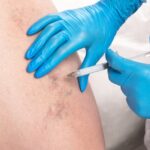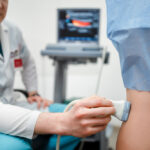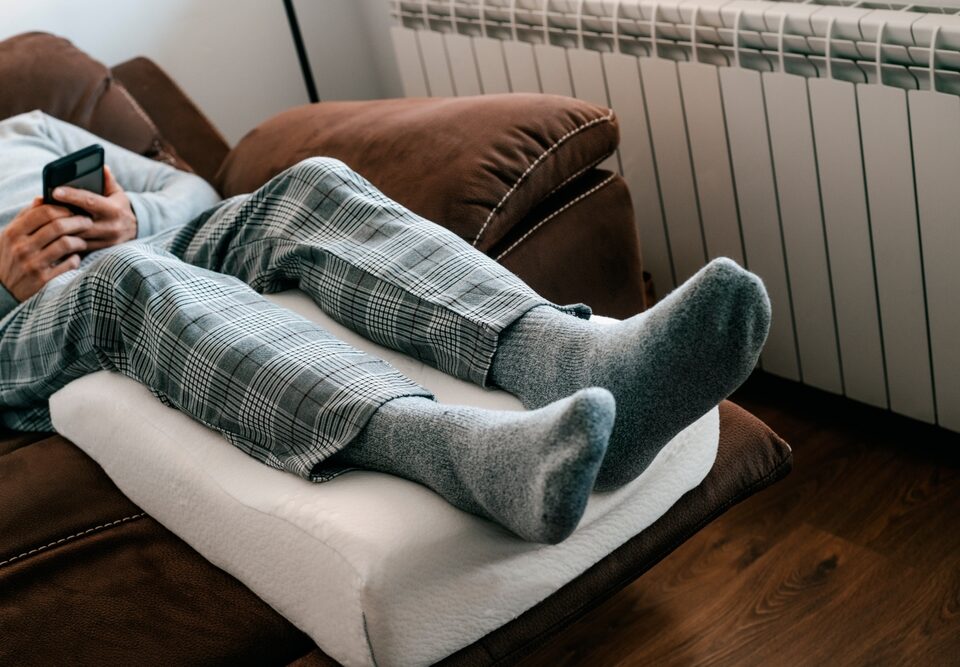
What to Expect After Sclerotherapy in MD
August 14, 2025
When to See a Vein Doctor in Columbia, MD
August 14, 2025Sometimes, leg cramps signal vein disease in ways you might not expect.
While many cramps are harmless and caused by dehydration, muscle fatigue, or low electrolytes, others may point to a circulation issue hiding beneath the surface.
Recognizing the difference early can help you protect your leg health and prevent future complications.
Causes of Leg Cramps
Leg cramps can result from overuse or fatigue of leg muscles, particularly after exercise or standing for extended periods.
Dehydration and electrolyte imbalances — especially low potassium, calcium, or magnesium — are also common causes.
Certain medications, such as diuretics or statins, and conditions like diabetes or peripheral artery disease can increase your risk.
Although most leg cramps are harmless, they can be painful, disruptive, and sometimes a sign of vein disease.
How Leg Cramps Signal Vein Disease
One of the most common vein conditions that can cause leg cramps is chronic venous insufficiency (CVI).
CVI occurs when the one-way valves in leg veins weaken or become damaged, causing blood to pool in the lower extremities instead of flowing back to the heart.
This pooling increases pressure, reduces circulation, and limits oxygen delivery to the muscles — often triggering cramps, especially in the calves.
Symptoms That Leg Cramps May Indicate Vein Disease
You should see a vein specialist if your cramps are:
-
Severe – Recurrent and worsening over time.
-
Accompanied by swelling – Tightness or puffiness in the legs.
-
Linked to skin changes – Discoloration, dryness, or itchiness.
-
Visible vein changes – Varicose or spider veins in the area.
-
Sensory changes – Restless legs or heaviness in the legs.
-
Disruptive – Interfering with sleep or daily activities.
When to See a Specialist
If leg cramps are frequent, severe, or accompanied by the above symptoms, a vein evaluation is important.
A specialist will review your medical history, examine your legs, and may order a venous ultrasound to detect valve problems or blockages.
This non-invasive test uses sound waves to create images of your veins and guide treatment planning.
Treatment for Vein-Related Leg Cramps
If leg cramps signal vein disease, treatment options include:
-
Compression stockings – Apply gentle pressure to improve circulation and reduce swelling.
-
Radiofrequency ablation (RFA) – Uses heat to close off damaged veins.
-
Endovenous laser therapy (EVLT) – Seals diseased veins with laser energy.
-
Sclerotherapy – Treats smaller varicose or spider veins.
These minimally invasive treatments restore healthy blood flow with little downtime.
Lifestyle Changes to Support Vein Health
Daily habits can make a big difference in vein-related cramp prevention.
Stay hydrated and maintain a healthy diet.
Exercise regularly and elevate your legs when resting.
Avoid long periods of sitting or standing, and wear compression stockings if recommended.
Limiting caffeine and alcohol may also reduce cramp frequency.
Call Now to Book Your Appointment
If you suspect your leg cramps may be related to vein disease, don’t wait.
Call 410-970-2314 today to schedule a consultation with one of our top-rated vein specialists.
Early care can protect your circulation, relieve symptoms, and improve your quality of life.



